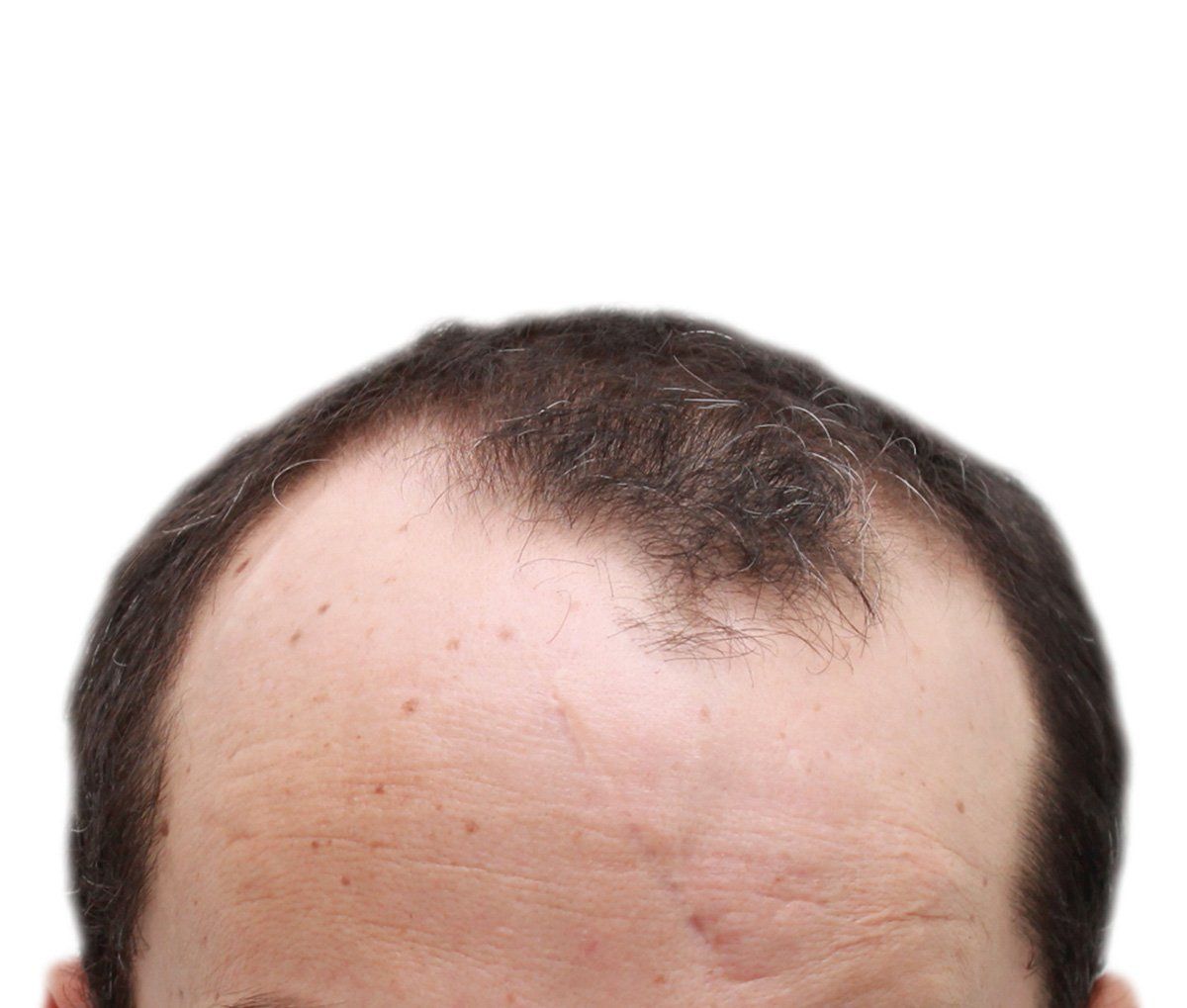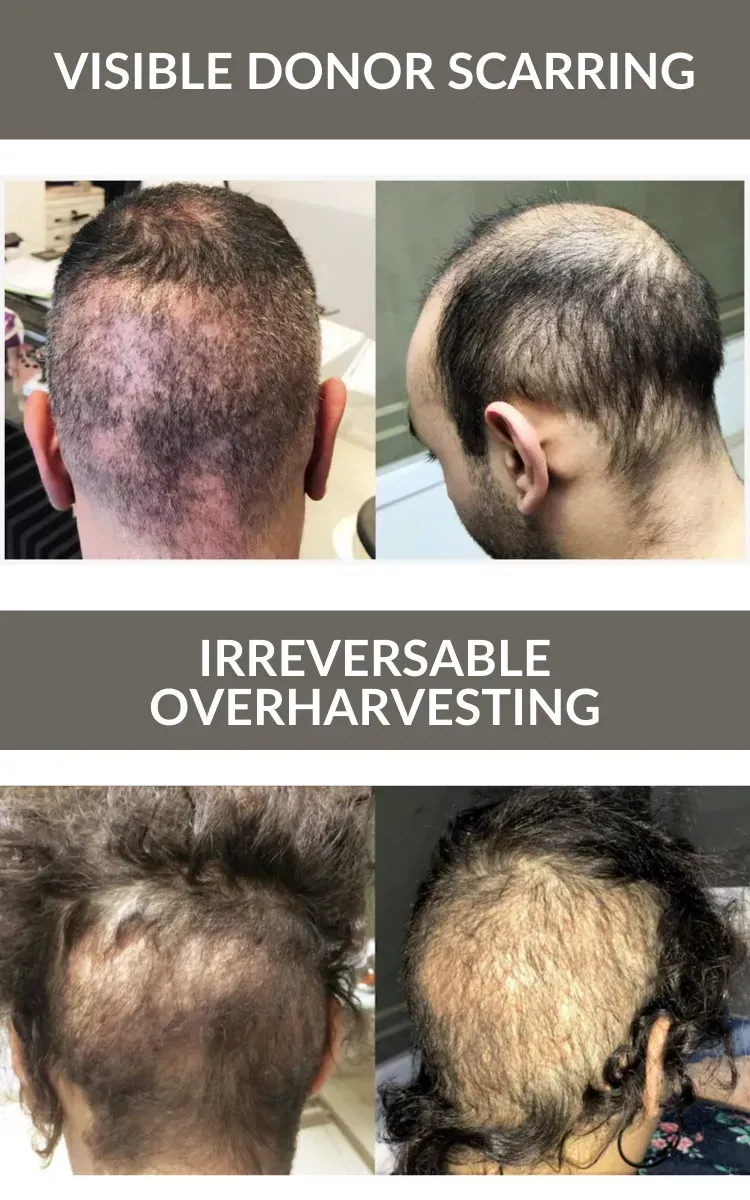Hair Transplant Gone Wrong? Here’s How to Fix It and Avoid Disaster
A full head of hair is more than just a look—it’s confidence, self-expression, and identity. So when a hair transplant goes wrong, the emotional and financial toll can be devastating. Many people turn to hair restoration to reclaim their youth and confidence, but choosing the wrong provider can lead to disastrous results: unnatural hairlines, excessive scarring, infections, and even permanent damage.
If you’re worried about cheap hair transplants gone wrong or have already experienced one, don’t panic. This guide will help you understand what went wrong, how to avoid bad results, and what options exist to
fix a botched hair transplant.
How Can a Hair Transplant Go Wrong?
A successful hair transplant should look completely natural, with hair growing in its new location as if it had always been there. But when performed by unqualified surgeons or low-cost clinics, the results can be catastrophic.
Here are the three main ways a hair transplant surgery can go wrong:
1. Overharvesting from the Donor Area
A skilled surgeon carefully extracts hair follicles from a donor area (typically the back of the head) without depleting too many. But when an inexperienced or careless surgeon removes too many follicles, it can cause:
- Bald patches or thinning at the donor site
- Visible scarring that makes it impossible to wear short hairstyles
- Irreversible damage to healthy follicles, limiting future restoration options
2. Poor Implantation Techniques
Implanting the harvested hair is an art and a science. If not done correctly, the results can be unnatural and obvious, leading to:
- An unnatural, pluggy look (like outdated “hair plugs gone wrong” from the 80s and 90s)
- A misaligned or artificial-looking hairline that doesn’t match your facial structure
- Grafts placed at the wrong angle, causing the hair to grow in awkward directions
3. Inadequate Pre- and Post-Surgery Care
Even a well-executed transplant can fail if the proper preparation and aftercare steps aren’t followed. Issues include:
- Infections that damage the transplanted follicles
- Follicle rejection, where the newly placed hair never grows
- Excessive scabbing and irritation, slowing recovery and impacting final results
Red Flags: How to Spot a Bad Hair Transplant Clinic
Choosing the right hair transplant clinic is the single most important step in avoiding a bad outcome. If a clinic seems too good to be true, it probably is the wrong place.
Watch out for these warning signs:
1. Prices That Are “Too Cheap”
Hair restoration is a highly specialized medical procedure, not a discount deal. Clinics offering extremely low-cost hair transplants often:
- Cut corners with untrained technicians instead of qualified surgeons
- Use outdated techniques, leading to permanent scarring and unnatural results
- Overharvest donor follicles, leaving bald patches and irreversible damage
2. No Transparency About the Surgeon’s Credentials
A reputable clinic proudly displays detailed credentials for its surgeons, including:
- Years of experience in hair restoration
- Board certifications and medical licensing
- Patient reviews and before-and-after photos
If a clinic hides the surgeon’s name, won’t disclose their experience, or claims the procedure is done by “a team” with no specific details, walk away.
3. High-Pressure Sales Tactics
A good clinic prioritizes your results and safety, not just making a sale. If they:
- Push you into booking quickly without a full consultation
- Promise unrealistic results in record time
- Offer deals that seem too good to be true
Can a Hair Transplant Gone Wrong Be Fixed?
If you’ve already had a hair transplant gone wrong, don’t lose hope. While some damage may be irreversible, an experienced hair restoration specialist can often improve or completely correct bad results.
Here’s how:
1. Corrective Hair Transplant Surgery
A skilled surgeon may be able to harvest new follicles and reimplant them properly. This can:
- Rebuild a more natural hairline
- Fill in gaps from a previous bad transplant
- Improve hair density and coverage
However, if your donor area was overharvested, this may not be an option.
2. Scalp Micropigmentation (SMP)
For cases where another transplant isn’t possible, scalp micropigmentation can create the illusion of thicker hair. This involves:
- Tattooing tiny pigment dots to mimic hair follicles
- Blending uneven areas from a bad transplant
- Helping scars from past surgeries fade into the scalp
3. Laser Therapy & PRP Treatments
For transplants that have left thinning but still viable hair, platelet-rich plasma (PRP) therapy or low-level laser therapy (LLLT) can help stimulate growth and strengthen existing follicles.
4. Scar Revision Surgery
If visible scars are a problem, a qualified surgeon can:
- Minimize scarring through special skin treatments
- Use FUE (Follicular Unit Extraction) to transplant hair into scarred areas
How to Ensure Your Hair Transplant Is a Success
A hair transplant is an investment in your confidence and appearance, so choosing the right clinic is essential. To avoid a hair transplant gone wrong, follow these key steps:
- Choose a clinic with board-certified specialists – Always research the credentials and experience of the doctor performing the procedure.
- Avoid bargain hair transplants – Cheap clinics often cut corners that lead to permanent damage and unnatural results.
- Verify patient reviews and real results – Look for authentic before-and-after images and testimonials from actual patients.
- Follow proper pre- and post-care – A good clinic provides detailed guidance to ensure your transplant heals correctly.
- Act quickly if something goes wrong – If you suspect your hair transplant isn’t healing properly, seek professional advice immediately.
At HERO Hair Institute, we specialize in advanced robotic-assisted hair restoration, ensuring every patient achieves natural, long-lasting results without the risk of a botched transplant.
If you’re looking to fix a cheap hair transplant gone wrong or want to ensure your first procedure is done correctly, schedule a consultation today. Your confidence is worth the investment.
Medically reviewed by
Juan Carlos Maldonado
Medical Director
Frequently Asked Questions
What happens if a hair transplant goes wrong?
A botched hair transplant can result in unnatural hairlines, excessive scarring, infections, or poor hair growth, often requiring corrective procedures.
Can a bad hair transplant be fixed?
Yes, options like corrective transplant surgery, scalp micropigmentation (SMP), laser therapy, and scar revision can improve or fix poor results.
How do I avoid a hair transplant gone wrong?
Choose a certified, experienced surgeon, avoid cheap clinics, verify patient reviews, and ensure proper pre- and post-care for the best outcome.
Is a cheap hair transplant worth the risk?
No. Low-cost hair transplants often lead to permanent damage, unnatural results, and costly corrections. Investing in a reputable clinic ensures safe, natural results.

We can help!
If you’re experiencing hair loss and looking for a hair restoration solution that’s right for you—congratulations! You’ve come to the right place. HERO Hair Institute is the best hair restoration clinic in Colombia, providing proven permanent hair transplant techniques and non-surgical hair loss solutions.
With over 20 years of experience, HERO Hair Institute offers you the best quality procedures in a safe, relaxed and comfortable environment. Thousands of men and women have come to HERO Hair Institute for the answers to their hair loss and hair restoration questions.












